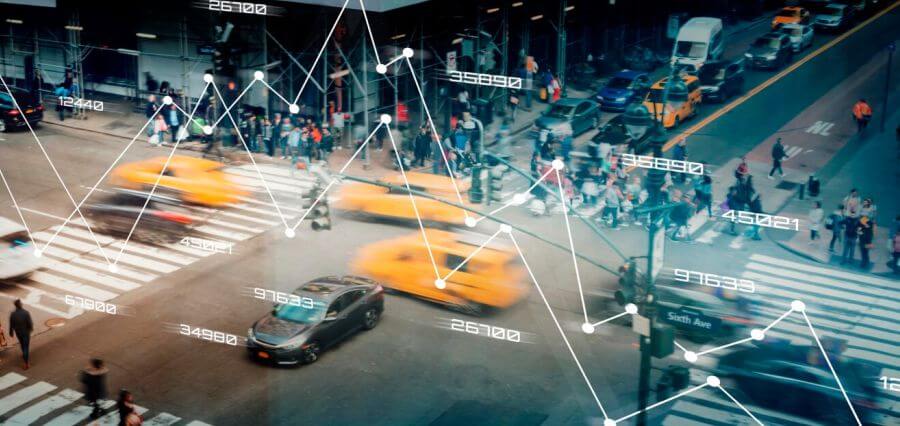Going back a decade, the idea of self-driving cars seemed as fictional as a sci-fi movie. However, as technology improves, this futuristic idea is coming true, and modern urban planning is changing as we know it.
Conventional vehicles, such as muscle and vintage cars, available on Dyler, are gradually making way for autonomous vehicles on city streets. If there was an appropriate phrase to illustrate this, it would be “change is the only constant”. This is proven to be the case as we watch urban planning undergo a seismic shift.
Technology has a wide application in this field, from reinventing mobility to revolutionizing public transportation. Hence, let us walk you through this fascinating intersection of technology and urban development.
Current Challenges in Urban Transportation
Civilization is growing and the pace of life is faster than it has ever been. On the other hand, urbanization creates a lot of problems in terms of mobility.
Transport energy consumption in urban areas accounts for approximately 40% of the world’s total energy consumption, thus making it a very important factor in urban planning and development.
Here are the common challenges:
Traffic Congestion
The urban areas are encountering more severe traffic congestion due to the population density that is increasing, limited road capacity, and inefficient traffic management systems.
Air Pollution
Congested transportation in urban areas significantly increases air pollution causing health issues and environmental decline.
Limited Parking Spaces
Limited number of parking spots in urban areas creates hardships for commuters and aggravates traffic jams as drivers keep moving to find parking places.
Inadequate Public Transportation
Many cities have inefficient and inaccessible public transportation systems, resorting to private vehicles which contribute to traffic congestion and air pollution.
Potential Benefits of Autonomous Vehicles in Urban Planning
Autonomous vehicles, in all probability, might become the catalyst for the transformation of urban transportation with its many positive effects. Their benefits may include:
Reduced Traffic Congestion
Autonomous vehicles are capable of communicating with each other and traffic infrastructure, which leads to the optimization of traffic flow and, consequently, decreases the congestion in urban highways.
Increased Safety
Thanks to its built-in sensors and algorithms, the autonomous cars industry is likely to achieve a considerable reduction of accidents related to human mistakes thus improving the safety level of the road users.
Improved Efficiency
Autonomous vehicles can travel more efficiently with reduced travel times and fuel consumption, hence cutting greenhouse gas emissions and lessening environmental impact.
Optimized Land Use
Urban planners, on the other hand, have the option of using autonomous shared fleets and reduced parking spaces, as well as repurposing the land that had been previously allocated for parking. This will result in more efficient and productive use of land and urban development.
Impact of Autonomous Vehicles on Urban Infrastructure
AVs have the capability to change urban infrastructure, necessitating significant adaptations to accommodate their integration into city environments.
Let’s talk about how AVs impact urban infrastructures:
Need for Updated Road Designs and Signage
The inception of autonomous vehicles requires redesigning of roads and roadsides to provide the necessary facilities for their functioning. Possible roadway modifications may include separate lanes, designated pick-up and drop-off zones, and intelligent intersections outfitted with sensors.
Also, signage signs have to be understandable and user-friendly to clearly communicate to both human drivers and autonomous systems.
Integration with Existing Public Transportation Systems
Autonomous vehicles provide an opportunity that significantly improves transit systems by ensuring a smooth flow of operation between buses, trains, and any other means of public transport. Such integration can increase the efficiency of routes, reduce traffic jams and improve the overall improvement.
Development of Dedicated Lanes or Zones for Autonomous Vehicles:
More cities would benefit from the deployment of AVs by creating dedicated lanes or special areas fit for their operation. These lanes can be reserved for autonomous vehicles to just flow freely, thereby leading to a reduction in delays and improved travel times for passengers.
Further on, transfer zones for autonomous vehicles e.g. loading and unloading areas, can increase security and efficiency in urban areas
Socio-Economic Implications
The socio-economic impact of self-driving cars vastly spills beyond transportation. Here are some of the Socio-Economic Implications of Autonomous Vehicles on Urban Infrastructure:
Job Displacement and Retraining Opportunities
With the increasing level of autonomous cars, jobs connected with traditional transportation sectors like taxi and truck driving and deliveries may be lost eventually.
Autonomous technology growth leads to new job creation in industries such as maintenance, software, and data analysis as well. Reskilling programs and educational courses will become a necessity to help the workers attain the technical abilities required for these new roles.
Accessibility and Mobility for Underserved Communities
With an emphasis on accessibility, autonomous vehicles can contribute to a mobility shift for the underprivileged classes such as old persons, those physically challenged, and those living in remote areas with poor public transportation.
Not only will autonomous vehicles improve the affordability and convenience of transportation, but they can also advance the social inclusion and economic chances of these communities, therefore reducing the gap in mobility and access to fundamental services.
Economic Opportunities and Urban Development
The deployment of autonomous vehicles in mass is anticipated to result in a number of economic consequences, redefining industries and affecting urban planning. Businesses could experience higher productivity and lower transportation expenses, while cities could undergo shifts in land use and real estate values.
Conclusion
With the change in urban landscapes, autonomous vehicles are becoming a credible answer to transportation challenges. Their capability of taking off the burden of congestion, improving safety levels, and optimizing traffic systems in urban area is immense.
However, a successful integration must be preceded by a critical analysis of related regulatory frameworks, socio-economic effects, and technological developments. Through collaboration and innovation, autonomous vehicles can be the tools to remold the future of urban planning and make cities more efficient and sustainable.


